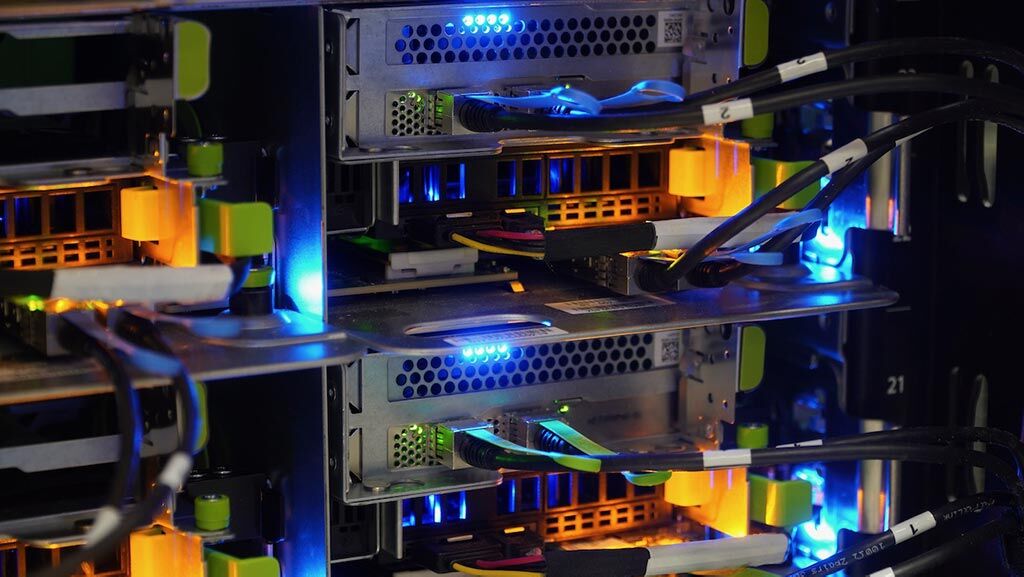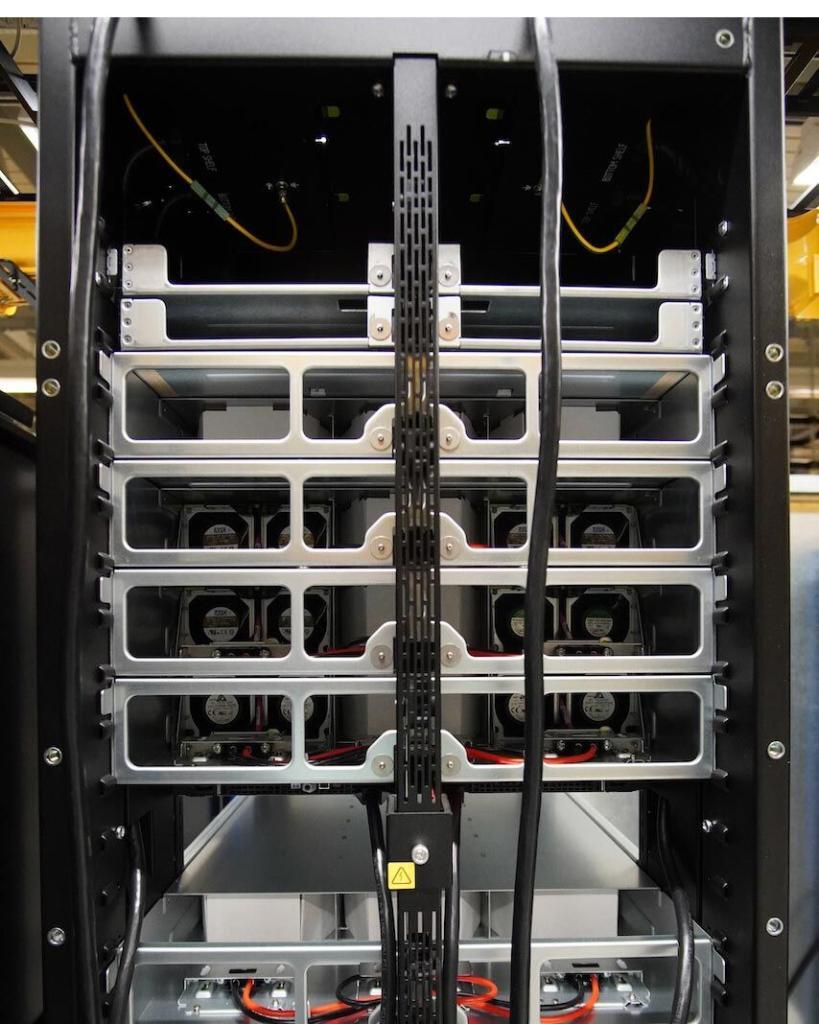The digital transformation is reaching all areas. Data centers themselves are also affected. The demand for computing power has been growing exponentially for years. The main reason for this is the high level of innovation and the speed with which new digital industries such as AI, edge computing, IoT and Big Data are being driven forward. Data centers can only cope with this enormous growth through automation and significant increases in the effectiveness of hardware and software components. Open Compute Hardware (OpenSource Hardware) has enormous potential to sustainably improve resource efficiency in data centers.

What is the Open Compute Project (OCP)?
The Open Compute Project (OCP) is an open tech community launched by Facebook that strives to make data centers and their hardware components more efficient.
How did the Open Compute Project come about?
Facebook was already growing exponentially in 2009. Looking ahead, the company realized it needed to rethink its data center infrastructure to accommodate the huge influx of new employees and data, and also to better control costs and energy consumption.
Facebook then formed an internal team that set itself the task of designing the most energy-efficient data center of the future - and building it. The result was the design for what was then the world's most energy-efficient data center. It was 38% more efficient to build and 24% cheaper to operate compared to the company's previous data centers. The small team spent two years designing and building the digital infrastructure from scratch: software, servers, racks, power supplies and cooling. The highly scalable data center is located on Facebook's largest data center site in Prineville, Oregon.
In 2011, Facebook published its blueprints to further accelerate the development of efficient computing infrastructure. Together with Intel, Rackspace and Goldman Sachs, and German computer scientist and entrepreneur Andreas (Andi) von Bechtolsheim, Facebook launched the Open Compute Project and the Open Compute Project Foundation. By pooling resources and ideas, members work together in the Open Compute Project (OCP) is working hard to make IT hardware, cheaper, more sustainable and less complex. The OCP works on a project basis on various development areas such as
- Data Center Facility,
- Hardware Management,
- Networking,
- Rack & Power,
- Security, Server,
- Memory,
- Telco,
- Open System Firmware
on which regular virtual meetings are held and working publications are published. OCP's open tech community and number of publications has grown steadily since its inception. In addition to hardware, OCP is also working to standardize software concepts so that software interfaces between vendors are equally portable.
The goal of OCP is integrated, open, scalable and efficient hardware and software components, as well as their specifications. Further goals are the reduction of complexity and improved interoperability of technical components. Sharing resources and ideas improves the speed of innovation for everyone. This has already been demonstrated by other open source communities such as the Cloud Native Computing Foundation (CNCF) and the Open Infrastructure Foundation (formerly OpenStack Foundation).
The OCP hardware market
The market for OCP hardware has grown steadily in recent years. Early adopters for OCP hardware are primarily large cloud providers, telecommunications companies, gaming providers and crypto companies. However, the public and e-commerce sectors are also asking for OCP hardware to reduce their IT costs and make their digitalization sustainable¹. The demand for green IT and development towards the circular economy will give the market for OCP hardware a further boost.
How is OCP hardware different from traditional hardware components?
OCP servers are visually very different from conventional servers. They are primarily designed for load-intensive operation and higher operating temperatures (i.e. ideal in cloud computing). For optimal cooling performance, OCP servers are built without ventilation-inhibiting server enclosures. All IT components (compute, storage, RAM) are installed in open, pull-out trays. The installation of all elements is completely tool-free. This enormously reduces the time required for installation and maintenance work. The actual "server" exists only in a dissolved form as flexibly combined components located on a tray - without a power supply unit. Instead of power supply units in the servers, the individual trays (or servers) are supplied with direct current directly from a central large power supply unit in the rack. This DC power is routed vertically to the individual components via a central power rail at the rear of the rack. By eliminating the individual power supplies, the much larger (redundant) power supplies can be operated much more efficiently.

Due to the modular design and the assembly-free "click" construction, changing the capacity, i.e. scaling individual components up and down, is as easy as moving a box from location A to location B. OCP hardware was basically designed for scalability and reduction of complexity. Incidentally, it doesn't matter at all whether the box in question comes from manufacturer A, B or C, because it is standardized and thus interchangeable at will.

OCP's racks are also different. With a width of 60cm, OpenRacks are just as wide as conventional 19″ racks, but the installation width of the components is 21" and thus wider than conventional IT racks.
Conclusion
OCP sets new standards for the development of efficient, sustainable IT hardware components. With the rise of cloud computing and the growing need for low-cost and resource-efficient IT hardware, the demand for Open Compute Hardware will also continue to increase. OCP has also brought about a key change. Users design their hardware themselves within a community and pass on their requirements to manufacturers on the basis of standards. Without manufacturer lock-in, hardware parts from different manufacturing companies are thus always compatible or interchangeable.
OCP hardware is an integral part of the SDIA Roadmap for a CO2-neutral digital infrastructure by 2030, as also required by the EU Commission in the European Green Deal. ScaleUp is currently building a new IaaS cloud environment in Hamburg that will run on OCP hardware, making it the first cloud provider in Germany to take a major step towards a climate-neutral data center.
1 Open Compute Project - Market Impact Assessment, Omdia Study 2020, p. 8



